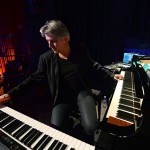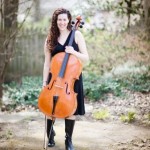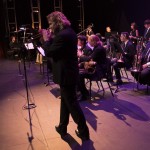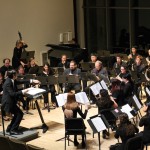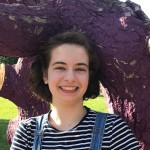Pianist Hans Lüdemann is returning to Swarthmore College to hold two performances in December. Previously, Lüdemann taught at Swarthmore as a Cornell Visiting Professor during two academic years: 2009-2010 and 2015-2016. In his first year at Swarthmore, Lüdemann taught “Jazz Today” and “African Music,” while in his second year, he taught “Improvisation” and “Jazz History.” One of the reasons why Lüdemann was invited to teach at Swarthmore was his connections to other artists.
“I was able to invite several of the artists I collaborate with to Swarthmore for concerts and workshops such as the TRIO IVOIRE with Aly Keita, singer Chiwoniso, violinist Mark Feldman and the trio ROOMS,” Lüdemann said. “The final performance was a collaboration between the TRIO IVOIRE, saxophonist Andrew Neu, and the College Jazz Ensemble.”
Currently, Lüdemann is not teaching regularly, except for occasional guest lectures and workshops. Instead, he is touring as a solo pianist in China, playing concerts in four cities—Shenzhen, Ruijin, Guangzhou, and Beijing. Furthermore, Lüdemann is associated with an artist with the record labels BMC and Intuition, and with publisher Schott (the original publisher of Beethoven). He is expecting two new releases next year. For 2019-2020, Lüdemann will be very busy working on solo recitals, touring South Africa, and composing an opera to premiere in 2020.
Although Lüdemann is currently stacked with various projects, his main desire in music has never changed. “My main interest always was, and still is, to invent and to create original music and to follow an artistic path of my own,” Lüdemann said. “I have also always been interested in exploring different musical sources and to draw from those sources.”
On Wednesday, December 5th at 12:30pm in Parrish Parlors, the Department of Music and Dance with the Departments of German and Media Studies will present a special lunch hour concert featuring Lüdemann and saxophonist Andrew Neu, who is also director of the Swarthmore College Jazz Ensemble.
Neu is looking forward to reconnecting with Lüdemann and anticipates a spontaneous concert. “We performed together several times during his tenure here, and we always had very natural chemistry,” Neu said. “We haven’t planned what we’re going to do yet, but that’s not unusual for jazz artists.”
For Lüdemann, he does not know what to expect for his upcoming performance because he never performs twice in the same way.
“There will be improvisation with emotional and atmospheric depth and there will be composed pieces and parts that are very melodic and concentrated,” Lüdemann said. “At times the music can be meditative and introspective, in other moments very lively and expressive.”
“It certainly should be an intense, fun, entertaining, and hopefully also moving experience, and the concert will also depend on the communication between artists and public, that plays an essential part in the creative process,” Lüdemann continued.
In addition to the lunch hour concert, Lüdemann will have a performance incorporating Swarthmore student monologues on Thursday, December 6th from 7:00-8:00 pm at Parrish Parlors. This performance originates from a collaborative project between Lüdemann and German writer Antje Ravic-Strubel. “The intention is to develop ideas in a workshop situation that combine the declamation of texts with musical concepts,” Lüdemann said. “It is a new project initiated by German professor Ute Bettray, and I am very curious myself if it will evolve into something very precise and composed, or if the formats we develop will be more of an improvised nature.”
“I always found that Swarthmore was an inspiring place to be, and a great place to develop and sharpen one’s senses and skills, while being embedded in a very cooperative and social environment. I hope Swarthmore still is and will continue to be this kind of a place, and I am glad to become part of that again, even if it is just for some days this time,” Lüdemann concluded.
David Chan ’19
